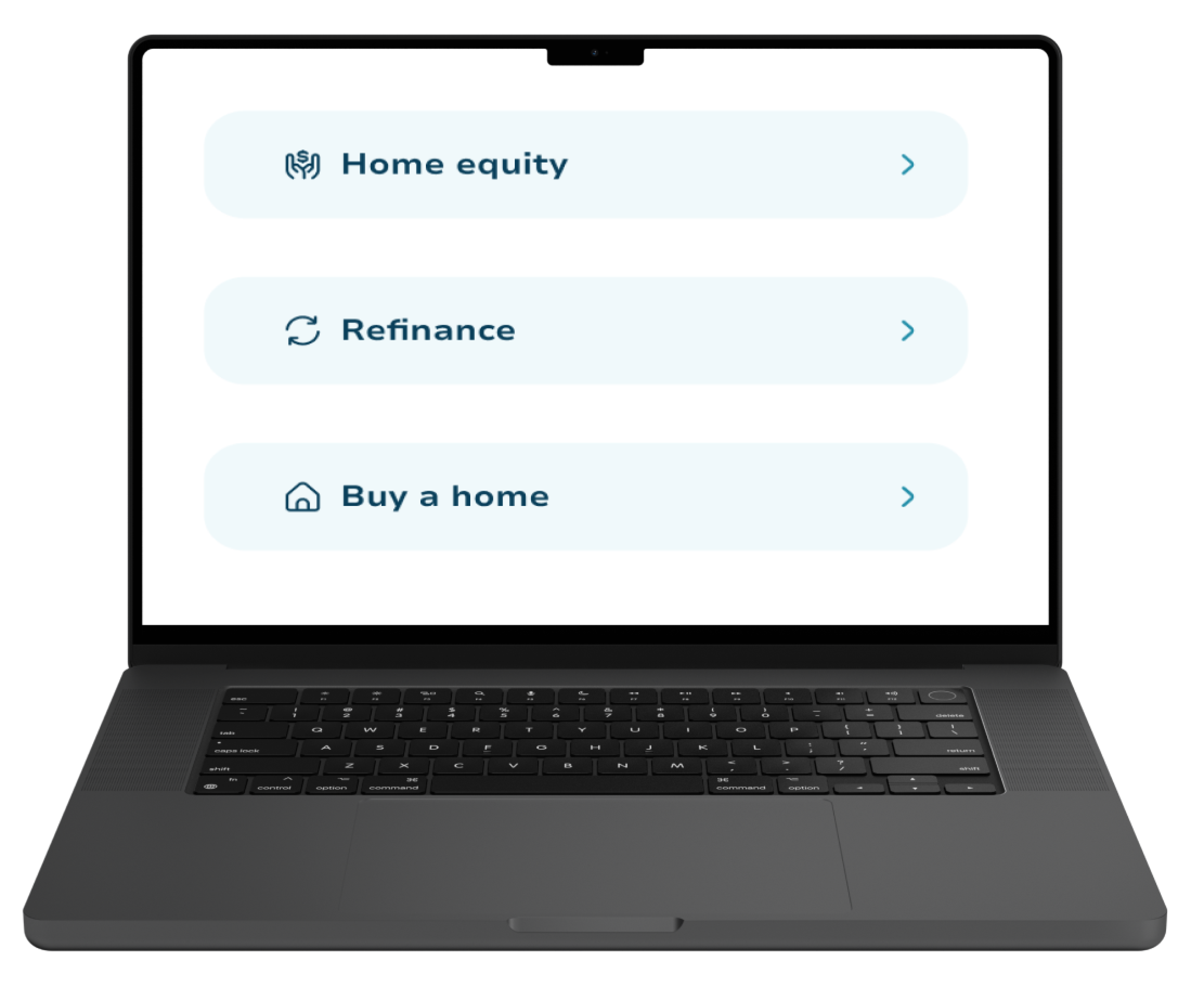Debt-service coverage loans, or DSCR loans, are great for real estate investors to use their rental property income to finance additional residential properties. These non-QM loans evaluate lending viability by calculating an investment property’s income rather than its owner’s personal credit and employment history.
Quick Summary
DSCR loans are great for residential real estate investors who are purchasing additional properties.
They have higher interest rates than typical qualified mortgages but can be a valuable, easy-to-use tool for new real estate investors and seasoned professionals.
Key requirements: Most lenders require borrowers’ investment property income to exceed property expenses.
Tips: DSCR loans are great for purchasing multi-unit properties.
What Are DSCR Loans?

DSCR loans are non-QM (non-qualified mortgage) loans that allow investors to bypass typical mortgage checks and base their eligibility on their investment property income.
DSCR loans are designed with real estate investors in mind. It’s typical for real estate investors to have atypical income streams or limited liquid cash. As a result, many investors could be excluded from many conventional loans.
- Tip: Most lenders require a higher down payment with DSCR loans than conventional mortgages, typically 20%.
DSCR loans work well for investors because lenders instead assess eligibility based on the loan type’s namesake: the debt-service coverage ratio.
What is the Debt-Service Coverage Ratio?

Eligibility for DSCR loans is calculated by dividing the investment property’s income by its total property expenses. These expenses, abbreviated as PITIA, are the property’s principal, interest, property tax, homeowner insurance, and association fees.
Most lenders require your debt-service coverage ratio to be above 1 to qualify for DSCR loans. This means that the property’s income matches its expenses.
For example, let’s say you own a rental property with an income of $3000 monthly. Your total PITIA expenses are $2400 monthly. Therefore, the property’s debt-service coverage ratio is 3000 / 2400, or 1.25.
Not sure which loan is right for you? Our free loan comparison calculator shows the side-by-side differences in cost, monthly payments, and long-term savings.
- Tip: A vacant property is earning no income. If you can’t retain or draw tenants, consider changing rent rates, marketing your rental differently, or converting to a short-term rental model.
How to Use DSCR Loans

Only residential real estate investors are eligible to use DSCR loans. They can’t be used to purchase a primary residence and are best suited to leveraging an owned rental property’s income.
Investors can use DSCR loans to purchase additional properties. They’re particularly useful for any real estate investors who may have difficulty qualifying for standard mortgages and looking to open additional revenue streams.
Advantages
- You can qualify for a DSCR loan even with limited liquid funds.
- If you own a multi-unit rental property, a DSCR loan could help you turn its income into even more properties.
- You can borrow with a DSCR loan as an LLC to protect personal assets.
What Are Non-QM Loans?
Non-QM loans are a category of mortgages designed to meet irregular financial profiles and fill specific financing niches. Eligibility requirements are often quite different from conventional mortgage loans.
Most mortgage loans assess your credit score, financial history, and work history when considering your application. Many non-QM loans consider other factors, such as rental property income.
Non-QM loans aren’t useful for just real estate investors. Non-QM loans are often designed with unique borrowers in mind, such as self-employed and gig workers or foreign nationals. Some common non-QM loans include:
- DSCR Loans
- Bank Statement Loans
- ITIN Loans
- 1099 Mortgage
- Foreign National Loans
- Asset Qualifier Mortgage
- Full Doc Loan
- P&L Loan
- WVOE Loan
Looking to turn a short-term rental into a long-term asset? DSCR loans are an increasingly popular option for Airbnb investors, offering flexible financing based on cash flow, not personal income. Take a look at how they work for vacation rental properties.
- Tip: Non-QM loans aren’t backed by major financial institutions like Freddie Mac and Fannie Mae, so interest rates may be higher than traditional qualified mortgages.
Common Requirements for DSCR Loans
Lenders may differ with specific requirements but generally require borrowers to meet these criteria to be eligible for DSCR loans:
- Property debt-service credit ratio of 1.0 and above
- Credit score of at least 620
- A down payment of 20%
- A minimum loan amount of $100,000
- A maximum loan amount of $3 million
- A loan-to-value (LTV) ratio of 80% or lower
- An appraisal report assessing the property’s value
Keep in mind that these are just general lender requirements. Lenders tend to vary on DSCR loan minimums and maximums. Because these mortgages are specific to rental property use, expect a much smaller range than you typically see with conventional mortgages.
Additionally, while lenders don’t require personal occupation and income history inquiries for DSCR loans, they often like to see property management successes when offering higher-value mortgages.
See what your monthly payment could look like, including estimated taxes and insurance, with our free mortgage calculator.
- Tip: Improve your approval odds by providing a proven track record of investment success. This could help you get approved even with poor credit.
Prepayment Penalties on DSCR Loans
Prepayment penalties are another typical DSCR loan requirement. In a loan with a prepayment penalty, a borrower must repay a percentage of the total borrowed amount if they pay the loan off early. The most common prepayment penalty structure is 3/2/1.
With a 3/2/1 prepayment penalty, if the borrower fully pays the loan back in the first year, they owe 3% of the loan’s total in fees. They’ll owe 2% if they pay it off in the second year, and so forth.

For example, you have a $500,000 DSCR mortgage loan with a 3/2/1 prepayment penalty structure. You gain significant capital after loan approval and decide to pay it off in its entirety in its first year. You will also be charged 3% of the loan’s total, or $15,000. If you were in year three of the loan, it would only be 1%, or $5,000.
Some lenders charge prepayment penalties in 5/4/3/2/1 structures or with a limited-time six-month fee.
Prepayment penalties are typically bundled with DSCR loans to reduce interest amounts. Not all DSCR loans charge these penalties. Some lenders allow borrowers to buy out their prepayment penalties to avoid charges later.
- Tip: Sometimes it’s better to secure a lower interest rate by applying for a mortgage with a prepayment penalty.

DSCR Loans Pros & Cons
Your financial situation determines whether you should use home equity loans. You’ll be leveraging your home as collateral, so you should review several options and their benefits and drawbacks before committing to any single home finance plan.
Pros
- DSCR loans are easier to qualify for than conventional loans and require no proof of income.
- They require less documentation than conventional loans, meaning your financial paperwork is significantly easier than a conventional loan.
- As a result, loan approval requires much less processing time and you can be approved for a DSCR loan quite quickly.
- You can have as many DSCR loans as you want, making them ideal for owners of multiple properties.
- You can continue taking out money when needed as DSCR loans offer unlimited cash-in-hand withdrawal.
- Many lenders offer jumbo DSCR loans for high-end real estate purchases, like large multi-unit properties.
- All rental types are eligible: whether it’s a large, long-term multi-unit property or a single-family home used as a short-term rental.
Cons
- Most lenders require a higher down payment for a DSCR loan than traditional loans, usually 20% or higher.
- Some lenders have high credit score requirements.
- DSCR loans are limited to only income-generating properties and therefore have little flexibility.
- Most DSCR loans require prepayment penalties to secure lower interest rates.
- Non-QM loans typically have higher interest rates than traditional mortgage loans.
- DSCR loans assess existing rental property income, so they can’t be used to purchase a new investor’s first investment property.
Taking the time to compare your options carefully can help you make a confident, informed decision that supports both your short- and long-term financial goals. Use our free home equity calculator to see how much you might be able to borrow and what your payments could look like.
Final Thoughts

DSCR loans are great for investors because they allow borrowers to qualify for financing based on a property’s rental income rather than personal income. Investors with irregular income streams, limited liquid cash, or who want to base investment financing on their properties’ performance can utilize these loans.
Mortgage Marketplace is here to help you with your real estate investment needs. Check out our free calculators to explore tools to calculate mortgage payments, find out how much you can afford, compare loans, and more!

I appreciate the breakdown of closing costs—it’s something I hadn’t considered before. Great read!

Sammy P
Queens, NY

5/5

Great article! I didn’t realize how important it is to budget for maintenance and closing costs. Very helpful!

Jeremy M
Georiga, MD

5/5

This was super insightful! The tips on saving for a down payment cleared up a lot of confusion for me.

Tania N
Towns, CA

5/5


FAQ
What does DSCR stand for?
+DSCR stands for debt-service coverage ratio. It’s a ratio commonly used to calculate the performance of rental properties and to determine rental investors’ eligibility for DSCR loans.
How do you calculate the debt-service coverage ratio?
+DSCR loans often require a rental property’s income to exceed its expenses. The ratio is calculated as: property income divided by total PITIA expenses, which are Principal, Interest, Property Taxes, Homeowners Insurance & Association Dues.
How many DSCR loans can you qualify for?
+DSCR loans are useful to real estate investors partly because there’s no limit to the number of loans you can qualify for.
Are DSCR loans non-QM?
+DSCR loans are non-qualified mortgages, which means they have alternative eligibility requirements and may be more accepting of atypical financial profiles. However, they are not financially backed in the same way as most mortgages, so they commonly charge higher interest rates than most qualified mortgages.
Can you use a DSCR loan on a distressed property?
+Purchasing and renovating distressed properties is a great way to save on initial investment costs, but DSCR loans are ill-suited to this money-saving practice. Most lenders expect DSCR-financed properties to be renter-ready and likely will not approve applications for distressed properties.
Why Choose My Mortgage Marketplace?

Simplified Process
Effortless Application, Expert Support
From pre-approval to closing, our streamlined process and experienced team make home financing stress-free.

Tailored Solutions
Personalized Plans for Your Needs
Whether it's refinancing, home equity, or a new mortgage, we customize solutions to fit your financial goals.

Transparent Experience
Clear Rates, No Surprises
We provide competitive rates and full transparency, so you know exactly what to expect at every step.
